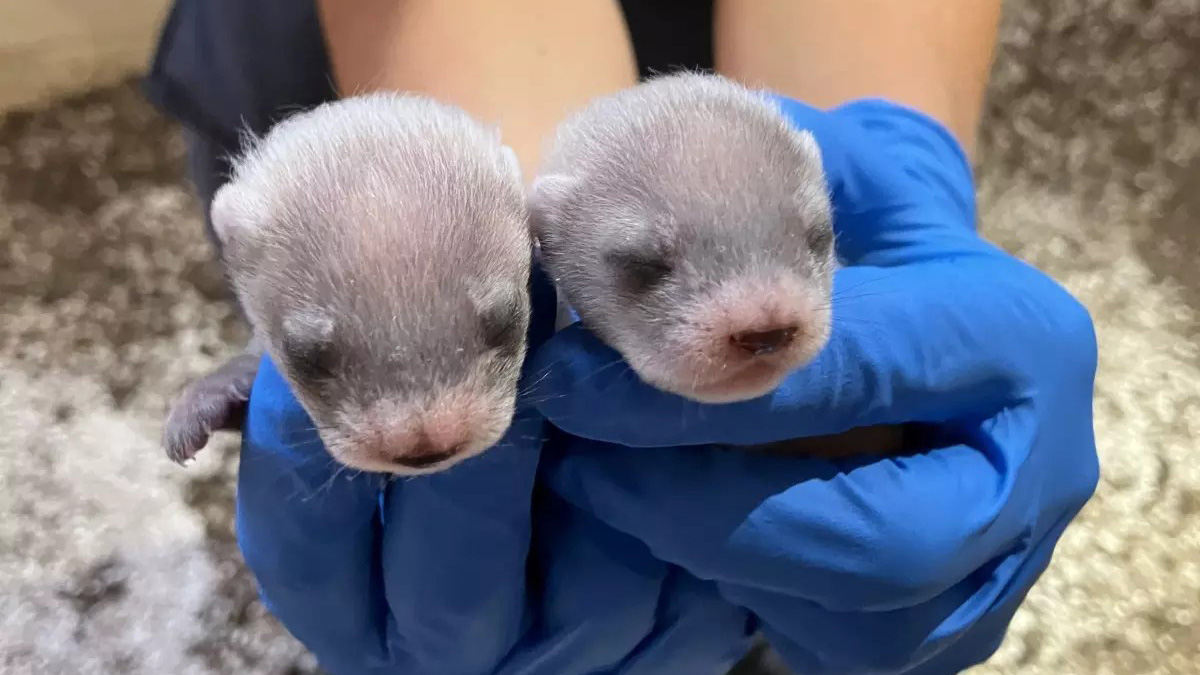The U.S. Fish and Wildlife Service and conservation partners have announced a groundbreaking achievement in endangered species research: the first-ever birth of black-footed ferrets produced by a cloned endangered animal.
This historic event occurred at the Smithsonian National Zoo and Conservation Biology Institute (NZCBI) in Front Royal, Virginia.
Antonia, a cloned black-footed ferret, has successfully given birth to two healthy offspring after mating with Urchin, a 3-year-old male black-footed ferret at Smithsonian’s NZCBI. This marks the first time a cloned U.S. endangered species has produced offspring, showcasing a critical step forward in using cloning to enhance genetic diversity in conservation efforts.
While one of the three kits passed away shortly after birth, two—one male and one female—are in good health and meeting developmental milestones under the care of NZCBI carnivore keepers. Antonia and her kits will remain at the facility for further research, with no plans to release them into the wild.
“The successful breeding and subsequent birth of Antonia’s kits marks a major milestone in endangered species conservation,” said Paul Marinari, senior curator at the Smithsonian’s NZCBI. “The many partners in the Black-footed Ferret Recovery Program continue their innovative and inspirational efforts to save this species and be a model for other conservation programs across the globe.”
Research partners cloned Antonia using tissue samples collected in 1988 from a black-footed ferret named Willa, whose genetic material was preserved in the Frozen Zoo at the San Diego Zoo Wildlife Alliance.
Partners at Revive & Restore and ViaGen Pets & Equine have pioneered this technology. Willa’s samples contain three times the genetic diversity seen in the current population of black-footed ferrets, all of which (except the three clones and new offspring) are descended from just seven surviving individuals. Introducing these previously unrepresented genes could play a key role in increasing the species’ genetic diversity, vital to healthy, long-term recovery.
The successful reproduction of a cloned endangered species is a landmark in conservation genetic research, proving that cloning technology can not only help restore genetic diversity but also allow for future breeding, opening new possibilities for species recovery. This represents a significant step in safeguarding the future of black-footed ferrets and overcoming the genetic challenges that have hindered recovery efforts.
This scientific achievement is the result of collaboration between the U.S. Fish and Wildlife Service and partners such as the Smithsonian’s NZCBI, Revive & Restore, San Diego Zoo Wildlife Alliance, ViaGen Pets & Equine, and the Association of Zoos and Aquariums. Cloning offers an important tool in addressing genetic bottlenecks and disease threats, such as sylvatic plague and canine distemper, that complicate recovery efforts for black-footed ferrets.
While this technology represents a promising new approach, it is one of many strategies being employed to aid species recovery. The Service continues to focus on habitat conservation, disease management, and the reintroduction of ferrets into the wild. Ongoing efforts include the development of disease resistance and habitat restoration across the Great Plains in collaboration with states, tribes, landowners, and other conservation partners.
The black-footed ferret is a specialist predator that preys primarily on prairie dogs and requires the burrow systems prairie dogs create for habitat. This important relationship links the recovery of black-footed ferrets to the conservation of prairie dogs and grassland ecosystems across western North America.
For more information on black-footed ferret conservation, visit the U.S. Fish and Wildlife Service’s National Black-footed Ferret Conservation Center. https://www.blackfootedferret.org/

